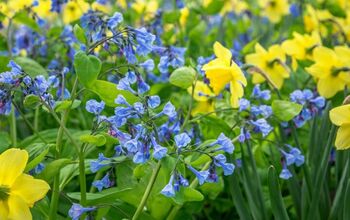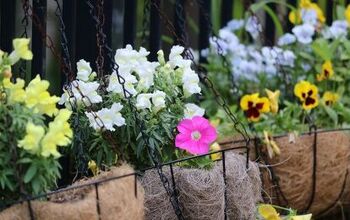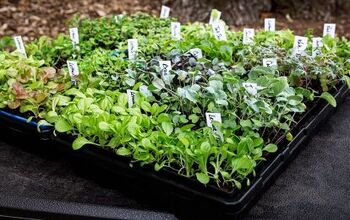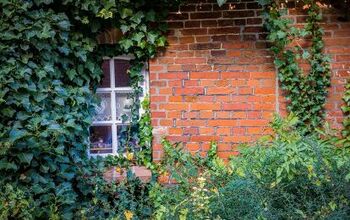When Should You Prepare Your Yard For Spring?

The promise of a warm, colorful spring is exciting to look forward to throughout winter. However, the coming of spring involves some prep work if you want your yard to stand out and thrive. So, when should you prepare your yard for the spring?
You should prepare your yard for spring between March and mid-April. This is the best time to aerate, fertilize, and mulch your yard to encourage healthy plant growth. Early spring is also the perfect time to treat your yard for weeds and protect it from pests like moles. It’s important to prune your shrubs and trees in March or April for optimal growth.
Keep in mind that many of the best spring preparation tips depend on your climate. Watch the forecast closely to make sure the weather won’t drop below freezing before you plant flowers and bulbs. Follow along as we explore when and how you should prepare your yard for spring.
When Should You Start Preparing Your Lawn For Spring?
The best time to prepare your yard for the spring is between early March and mid-April at the latest. That said, by mid-April, you’ll have to play catch-up if you haven’t done any prep work yet. In some climates, you can even prepare your yard for the spring in February.
That said, it ultimately depends on how consistently warm it stays where you live. In the Midwest, it may be in the 60s one week in February then drop back down to the 30s or 20s the next week. That’s why it’s important to check the forecast to make sure your lawn won’t freeze again before you do any prep work.
It’s also a great idea to check the soil temperature before you plant any seeds or bulbs and spread fertilizer. Ideally, the soil temperature should stay consistently at 50-65 degrees Fahrenheit before you plant anything. Otherwise, it will all go to waste and the bulbs may die if the soil temperature drops back down below 30 degrees.
8 Spring Yard Tips For A Lush Garden & Lawn
1. Aerate Your Lawn Early
The earlier you aerate your lawn in the spring, the better the results will be. Aerating your lawn gives the soil a chance to breathe. This will aid growth and help achieve a lush, green lawn that will make your neighbors jealous. It’s also a great way to boost curb appeal.
While you can aerate your lawn without help, it’s a great idea to hire a lawn service. It’s relatively cheap and costs an average of $125-$250 for a small or medium-sized lawn. Ideally, you should aerate your lawn in March, but early April is fine as well.
Make sure to water your lawn frequently after you aerate it. However, you must make sure you don’t oversaturate it. Water your lawn just enough to make sure the soil is moist. This will help the roots grow as deep as possible so your lawn is strong.
2. Mow Your Lawn 2-4 Weeks Later
Give your lawn some time to breathe after aeration before you mow it. Wait between 2-4 weeks before you mow your lawn for the best results. Mow your lawn before aeration and cut it down to 1 ½”-2”.
That way, your lawn won’t look overgrown after the 2-4 week waiting period after you aerate it. In some climates, you can mow your lawn for the first time in the year in late February. However, most homeowners must wait until March or even early April.
Mow your lawn weekly after mowing it the first time after aeration. In some climates, you may only need to mow your lawn every 2 weeks if temperatures stay in the 50s to low 60s. That said, you’ll need to mow your lawn at least every 7 days once summer rolls around.
3. Prune Your Trees
Early spring is the perfect time to prune your trees. They will have just come out of the dormant phase, so it won’t be too hard to trim the branches. Some people even prune their trees at the end of winter during the dormant phase.
The last thing you want is for dead branches to fall off and damage structures or make your lawn look bad. Contact a tree and lawn service if the dead branches are up too high. It’s dangerous to trim trees when the branches are high.
Tree-cutting services have the best tools and safety equipment to avoid a disaster. Prune your trees and shrubs to strengthen them and avoid lawn, roof, garage, and shed damage.
4. Fertilize Your Lawn
Fertilize your lawn before mid-April to encourage spring growth. You can fertilize your lawn as early as late February, but only if the cold weather is over. Otherwise, wait to fertilize your lawn until mid-to-late March for the best results.
It’s important to thoroughly water your lawn the day before you apply fertilizer. Check to make sure the grass is dry before you fertilize your lawn. Water your lawn again 24 hours after you fertilize it.
That said, you must check the directions on the bag of fertilizer to see when you should water your lawn. Each type of fertilizer is different, and some recommend lightly watering directly after application. Fertilizer helps your lawn grow faster and encourages lush, healthy growth that will stand out on your block.
5. Mulch Your Flower Beds
Soil erosion is one of the biggest threats to your yard and garden. Luckily, you can use mulch to protect your soil from erosion and weeds that can wreak havoc. Many homeowners wait until mid-March or early April to mulch their flower beds.
It’s ultimately a matter of choice, but it’s a great idea to do it sooner than later. Weeds start to pop up in mid-spring or earlier. While you can mulch your flower beds yourself, it’s a good idea to hire professional help if you have a big yard.
Landscaping services charge up to $120 per hour to mulch your yard, but it can cost as little as $50 per hour on the low end. Otherwise, services typically charge $20-$70 per cubic yard to mulch your garden.
6. Treat Your Lawn For Weeds
Mulch can protect your yard and flower beds against weeds, but that won’t help your lawn. Aeration helps your lawn breathe and grow, but it also leaves your yard vulnerable to weeds. That’s why it’s important to treat your lawn with weed killers after aeration to stop weeds from growing from the holes in your lawn.
However, the last thing you want to do is treat your lawn with chemicals right after aeration. Wait up to 2 weeks before you apply weed-killer chemicals to your lawn. Otherwise, you may damage the grass and even the soil.
Drip irrigation can help stop weeds from growing in your lawn. This method is non-toxic, so you won’t damage your lawn. That said, it can cost up to $750 or more to install a drip irrigation system, depending on your lawn’s size.
7. Treat Your Mole Problem Before It Starts
Moles can damage your beautiful lawn and make it look ugly. Treating your lawn for moles when they’re active is quite difficult. It’s much easier to take preventative action to stop the problem from popping up in the first place.
Early spring is the perfect time to set up mole traps to get rid of them and show them your lawn is the wrong one to mess with. Contact a pest control company so they can set out and maintain traps. Professionals know how to spread the traps around so that moles don’t learn patterns and circumvent them.
8. Turn Your Sprinklers On
It’s tempting to turn your sprinklers on as soon as the weather gets warm. However, you should wait until late April or even early May to turn them on. That’s because unpredictable temperature drops in early spring can damage your sprinkler system.
It’s quite expensive to repair a sprinkler system, so it’s not worth turning it on too early. However, you can turn your sprinkler system on early if you live in a climate with mild winters and warm spring seasons. Throughout the spring, you only typically need to run your sprinklers every other day. However, you may have to run your sprinklers daily once summer begins.
Summing It Up
Aerate your lawn in early spring to encourage lush growth, then apply a weed-killer two weeks later. Mow your lawn once before aeration, then wait at least 2 weeks to mow it again after aeration. Prune your trees and shrubs, rake fallen leaves, and clean your flower beds in early spring. Spring is also the best time to fertilize and mulch your lawn between March and May.
Related Guides:

Nick Durante is a professional writer with a primary focus on home improvement. When he is not writing about home improvement or taking on projects around the house, he likes to read and create art. He is always looking towards the newest trends in home improvement.
More by Nick Durante



























